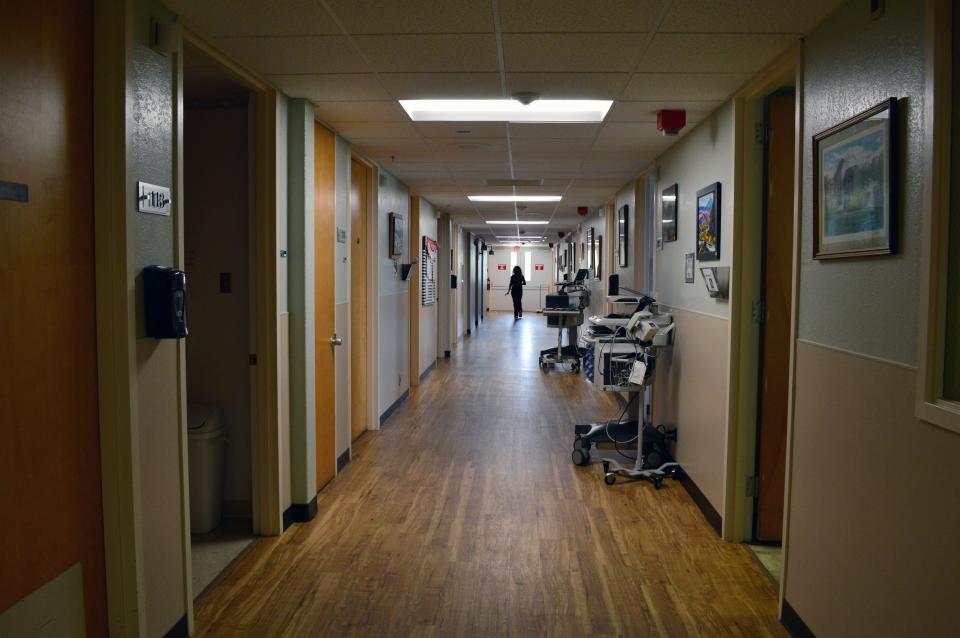US has a doctor shortage. Congress can help by expanding our physician workforce.
- Oops!Something went wrong.Please try again later.
Patients and family members, communities throughout the country, doctors, nurses and providers are all grappling with the reality of the depletion of the physician workforce in our nation’s health care system. The workforce shortage has been increasing since before the COVID-19 pandemic – accelerating at an even more alarming rate thereafter.
By 2034, according to the Association of American Medical Colleges, the demand for primary and specialty care physicians will exceed supply by a range of 37,800 to 124,000 physicians.
We represent different states from New Jersey to Arkansas to Maine and New York, but one challenge we have in common is a growing shortage of physicians to care for our people. We must tackle this issue head-on by increasing the number of doctors in order to avoid further straining our health care system and putting the lives of patients at risk.
Doctors experiencing burnout may retire early. We need to train more physicians – now.
Since Medicare’s inception in 1965, Congress has supported the mission of teaching hospitals to produce doctors by funding the additional costs of training residents.
In 1997, when it was widely thought that the U.S. was training too many physicians, Congress imposed a permanent graduate medical education “cap” on the number of resident physicians whose training Medicare supports. This outdated GME cap provision is still in place, and has limited the nation’s ability to maintain an adequate supply of doctors available to provide Americans all across the country with the high-quality care they deserve.
Opinions in your inbox: Get exclusive access to our columnists and the best of our columns throughout the week
On top of this entrenched challenge, growing concerns about physician burnout and pandemic-related trauma, stress, anxiety and frustration suggest that many physicians may accelerate rather than delay their retirement. Given the considerable time it takes to “train a doctor,” coupled with the aging physician workforce – more than 2 out of 5 currently active physicians will be 65 or older within the next decade – the time to invest in training more doctors is now.

Our bipartisan bill, the Resident Physician Shortage Reduction Act, is an integral part of the solution to the physician shortage crisis. It would gradually raise the number of Medicare-supported GME positions by 2,000 per year for seven years, for a total number of 14,000 new positions.
Each cap slot would provide for one year of training for a new doctor. When fully phased in, the bill would produce approximately 4,000 additional doctors a year – enough to offset the projected national shortfall and alleviate growing health care delivery and access challenges.
In the past three years, Congress added 1,200 new Medicare-supported GME slots, the first increase of its kind since it imposed the GME cap. While the additional slots are encouraging, they fall far short of the amount needed to fully address the physician shortage and ensure all Americans can access high-quality primary and specialty care, including mental health care.
In a 2022 advisory, the U.S. surgeon general noted the addition of these new Medicare-supported medical residency positions to bolster the supply of doctors but warned, “Many more (slots) are still needed” to address physician shortages, alleviate physician burnout, stabilize the nation’s health care delivery infrastructure and address systemic health inequities.
Will the doctor see you now? Maybe not amid the changing health care landscape in the US.
This is why Congress must work to increase support for GME and physician training right now. Bolstering GME will ensure we can meet the needs of our diverse and growing nation, broaden health care access and delivery, improve workforce diversity and health equity, address the mental health crisis and prepare for the next public health emergency.
Opinion alerts: Get columns from your favorite columnists + expert analysis on top issues, delivered straight to your device through the USA TODAY app. Don't have the app? Download it for free from your app store.
Congress’ growing interest in health care workforce shortage solutions is promising. The Senate Health, Education, Labor, and Pensions Committee held its first hearing of the 118th Congress on health care workforce challenges, and both Chairman Bernie Sanders and Ranking Member Bill Cassidy said the committee views health care workforce shortages as an area for bipartisan collaboration. It issued a request for rnformation on workforce shortages to solicit policy ideas directly from providers.
If we do not act now on commonsense, bipartisan plans to substantially increase the number of physicians in the training pipeline, the U.S. will soon face widespread health care scarcity.
We urge our colleagues in Congress to work with us to pass this essential legislation this year while we still have a critical window to reverse the physician shortage and improve care for our constituents and hardworking families all across the country.
Sen. Bob Menendez, a Democrat, represents New Jersey. Sen. John Boozman, a Republican, represents Arkansas. Sen. Chuck Schumer, a Democrat, represents New York. Sen. Susan Collins, a Republican, represents Maine. This column first published on northjersey.com
You can read diverse opinions from our Board of Contributors and other writers on the Opinion front page, on Twitter @usatodayopinion and in our daily Opinion newsletter. To respond to a column, submit a comment to letters@usatoday.com.
This article originally appeared on NorthJersey.com: As US doctor shortage rises, Congress must make physicians priority

